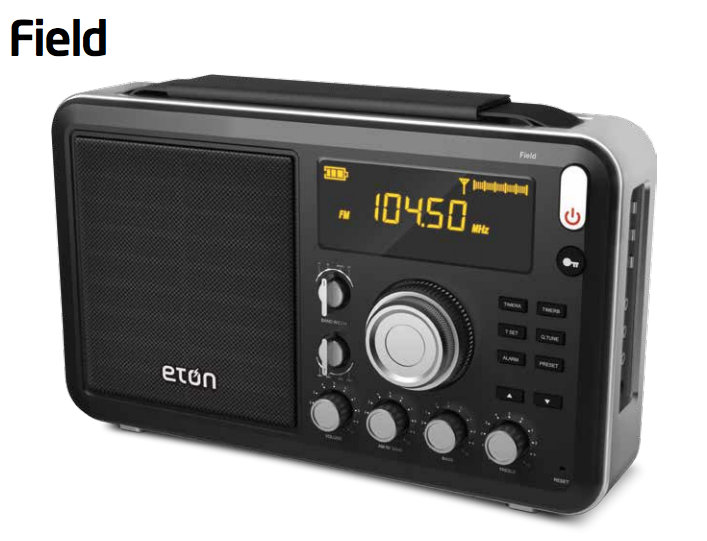
Many thanks to The Herculodge and SWLing Post reader, Gary, for pointing out these two new portables from Etón Corp: the Etón Field and Etón Satellit.
The Etón Field, pictured above, looks like an updated version of the Grundig S450DLX. Etón mentions the following features on their website:
- Frequency coverage:
- AM: 520 – 1710 kHz (selectable 9/10 kHz spacing)
- FM: 87.5 – 108 MHz
- SW: 1.711 – 30 MHz
- FM with RDS (Radio Data System)
- Dial-in-Dial coarse/fine digital tuning
- Treble/Bass control
- RF gain control
- Wide/Narrow bandwidth selection
- 50 memory stations
- External AM/FM/SW antenna connections
- Local/DX switch
- Rich orange LCD display
- Line-in/Line-out and headphone jacks
- FM telescopic antenna
- Carrying strap
- Reset/Lock button
- Power supply: 6V DC Adapter or 4 D Batteries (sold separately)
- Click here for the product spec sheet
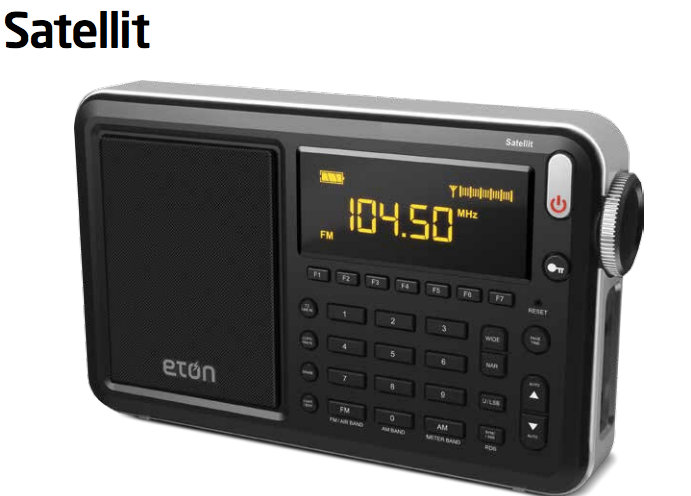
- Frequency coverage:
- AM: 520 – 1710 kHz (selectable 9/10 kHz steps)
- FM: 87.5 – 108 MHz
- LW: 150 – 285 kHz
- SW: 1.711 – 30 MHz
- AIR: 118 – 136 MHz
- FM with RDS (Radio Data System
- Single sideband (SSB) with +/1 kHz tuning
- VHF Aircraft band
- Automatic or Manual Digital Tuning
- FM stereo/mono selection
- Electronic/volume/treble/bass control
- Sync detector with selectable sideband
- Direct key-in meter band for SW
- 700 memory stations
- PLL synthesized dual conversion receiver
- Local/DX switch
- Local/world time zones
- Clock/Alarm/Sleep Timer with time backup
- Rich orange LCD display
- Reset/Lock button
- FM telescopic antenna
- Power supply: 6V DC Adapter or 4 AA batteries (sold separately)
- Click here for the product spec sheet
If you’re interested in the Satellit and would like to participate in open and active discussions, join this newly created Etón Satellit Yahoo Group.
It’s interesting to note that FM RDS has become a feature on both the Field and Satellit and that they sport a unique orange LCD display.
Update: Also note that Etón has introduced the Traveler III and the Mini 400 travel-sized shortwave portables.
A note about Etón
For those of you not familiar, Etón Corporation (based in Palo Alto, California) is also known as the Grundig brand throughout North America. Throughout the company’s history of designing and manufacturing shortwave radios, Etón has either branded their radios as “Grundig” or “Etón” (indeed, some models were branded with both, for example the Grundig G5 and Etón E5). I find the news of the Etón Field and Satellit very exciting as I feared the exit of the venerable Grundig G3 from the market might have also marked the departure of the company from the shortwave radio market altogether. Apparently not!
This is quite important for the SWLing hobby (in North America, at least) as Etón and Grundig products are unquestionably some of the most accessible shortwave radios on the market. Nearly every corporate or franchise retail store of RadioShack (Tandy) carries Grundig radios, as well as Universal Radio and a number of independent electronics/hobby stores throughout the continent.
By and large, I have always liked Etón/Grundig radios–I have purchased nearly everyone they’ve produced in the past six years. I also like the corporation, and it’s founder/CEO Esmail Hozour.
Indeed, Mr. Hozour and Etón Corp generously support global humanitarian efforts–they’ve donated and distributed thousands upon thousands of their self-powered radio/lighting products in the wake of disasters in Japan, the Philippines, Haiti, and even more. Regular SWLing Post readers will also know that Etón Corp generously supports my radio-based charity, Ears To Our World (a disclaimer that will be prominently mentioned on any future Etón/Grundig radio review here.)
It’s also quite simple to get in touch with Etón product support–a live human being is only an email or phone call away. Numerous times, I’ve directed readers to Etón support and their problems have been solved.
Bookmark this tag for more information on the Etón Field and Satellit. I have a hunch that they won’t be available until after the 2014 Consumer Electronics Show (CES).

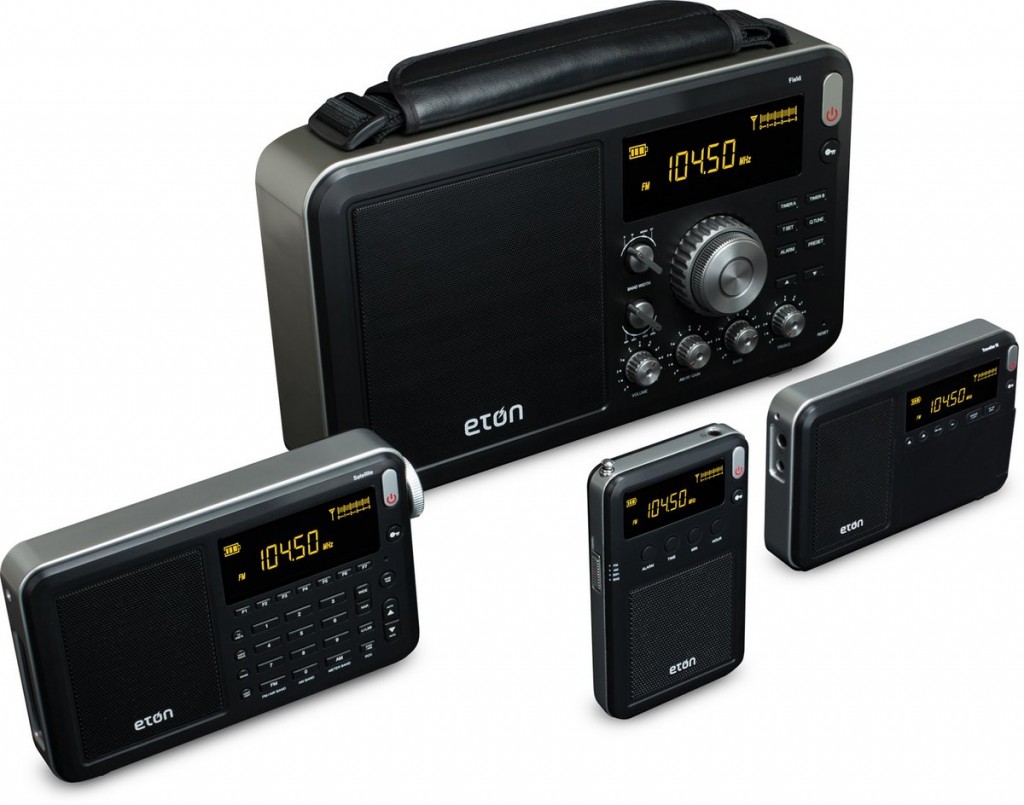
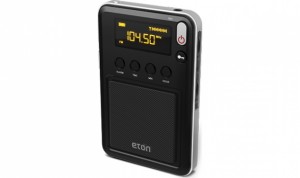
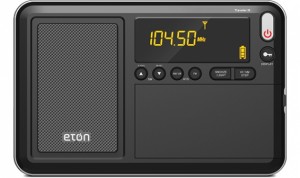


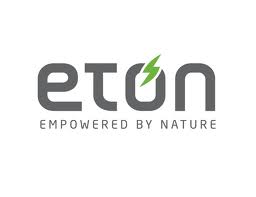
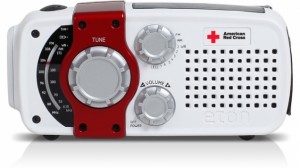 (Source:
(Source: 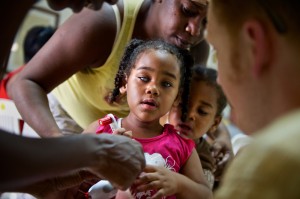
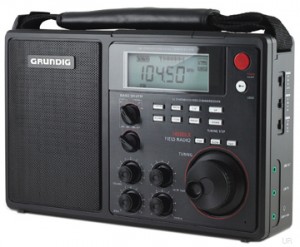
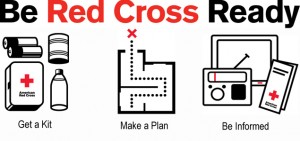


 Other recommendations I would add
Other recommendations I would add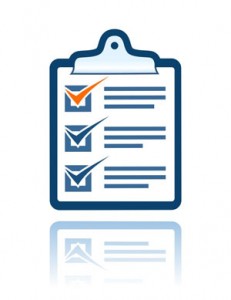 Being prepared, as I said earlier, is more than just having supplies. It’s about being prepared mentally and having your close family and friends on the same page should disaster strike. Also, you should be well aware of how things are handled locally.
Being prepared, as I said earlier, is more than just having supplies. It’s about being prepared mentally and having your close family and friends on the same page should disaster strike. Also, you should be well aware of how things are handled locally.